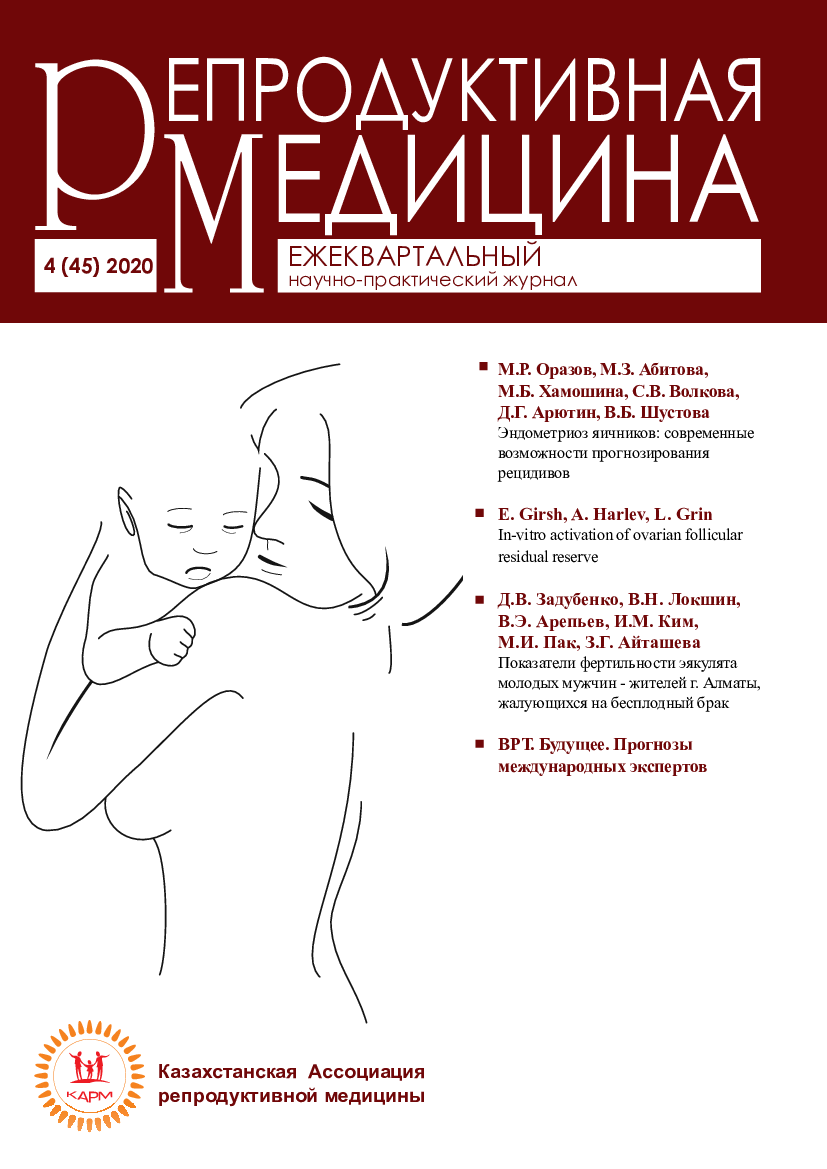Утеротонические препараты в профилактике послеродовых кровотечений
DOI:
https://doi.org/10.37800/RM2020-1-37Ключевые слова:
послеродовое кровотечение, атоническое кровотечение, утеротонические препаратыАннотация
Кровотечения в акушерстве в мировой практике занимают лидирующие позиции в структуре причин материнской заболеваемости и смертности. Согласно данным Всемирной Организации Здравоохранения ежедневно 800 женщин умирают от осложнений при родах. Основное количество случаев смерти матерей происходят в перинатальный период, обычно в течение 24 часов после родов. Большинство из них можно предотвратить. Отсутствие адекватной предгравидарной подготовки, некомпенсированные экстрагенитальные заболевания увеличивают процент патологических родов. Как следствие, практикующим акушерам-гинекологам всё чаще приходится сталкиваться с таким осложнением родов, как послеродовое кровотечение. Основные причины послеродовых кровотечений – атония матки. Снизить риск послеродового атонического кровотечения позволяет введение утеротонических препаратов. Особое внимание следует уделить профилактике послеродовых кровотечений, а именно применению утеротонических препаратов как неотъемлемой части активного ведения третьего периода при естественном родоразрешении и при проведении кесарева сечения.
Библиографические ссылки
WHO Library Cataloguing-in-Publication Data WHO recommendations for the prevention and treatment of postpartum hemorrhage. 1. Postpartum hemorrhage – prevention and control. 2. Postpartum hemorrhage – therapy. 3. Obstetric labor complications. 4. Guideline. I. World Health Organization. ISBN 978 92 4 454850 9 (NLM classification: WQ 330)
Bateman B.T., Berman M.F., Riley L.E., Leffert L.R. The epidemiology of postpartum hemorrhage in a large, nationwide sample of deliveries. Anesth. Analg. 2010; 110: 1368–73.
Blanks A.M., Shmygol A., Thornton S. Regulation of oxytocin receptors and oxytocin receptor signaling. Semin. Reprod. Med. 2007; 25: 52–9.
Thomas J.S., Koh S.H., Copper G.M. Haemodynamic effects of oxytocin given as i.v. bolus or infusion on women undergoing Caesarean section. Br. J. Anaesth. 2007; 98: 116–9.
Archer T.L., Knape K., Liles D., Wheeler A.S., Carter B. The hemodynamics of oxytocin and other vasoactive agents during neuraxial anesthesia for cesarean delivery: findings in six cases. Int. J. Obstet. Anesth. 2008; 17 (3): 247–54.
Robert A Dyer 1, Alexander J Butwick, Brendan CarvalhoOxytocin for labor and caesarean delivery: implications for the an aesthesiologist Curr Opin Anaesthesiol, 2011 Jun; 24(3):255-61.
Kovacheva V.P., Soens M. A., Tsen L.C. A randomized, double-blinded trial of a “rule of threes” algorithm versus continuous infusion of oxytocin during elective cesarean delivery. Anesth. 2015; 123: 92–100.
Prevention of postpartum hemorrhage with the oxytocin analog carbetocin, Werner Rath, Eur J Obstet Gynecol Reprod Biol, 2009 ноябрь; 147 (1): 15-20.
Moertl MG, Friedrich S, Kraschl J, Wadsack C, Lang U, Schlembach D. Haemodynamic effects of carbetocin and oxytocin given as intravenous bolus on women undergoing caesarean delivery: a randomized trial. Br J Obstet Gynaecol. 2011;118:11:1349-1356.
ShakurovaE.Yu., Ivshin A.A., Yatsukhno L.V., Yakovleva I.E., Yakovleva A.I., Kolybina P.V. International experience with pabal (carbetocin) for the prevention and treatment of postpartum hemorrhage. Rossiyskiy vestnik akushera ginekologa [Russian Bulletin of Obstetrician-Gynecologist]. 2016; 16 (4): 44–8. (in Russian)
Amsalem H., Aldrich C.J., Oskamp M., Windrim R., et al. Postpartumuterine response to oxytocin and carbetocin. J Reprod Med. 2014;59 (3–4): 167–73.
Ortiz-Gomez JR, Morillas-Ramirez F, Fornet-Ruiz I, Palacio-Abizanda FJ, Bermejo-Albares L. Clinical and pharmacological study of the efficacy of carbetocin in elective caesareans compared to low and usual doses of oxytocin. Rev EspAnestesiolReanim 2013;60 (January (1)):7–15.
De Bonis M, Torricelli M, Leoni L, Berti P, Ciani V, Puzzutiello R. Carbetocin versus oxytocin after caesarean section: similar efficacy but reduced pain perception in women with a high risk of postpartum hemorrhage. J Matern Fetal Neonat Med. 2012;25:6: 732-735.
Samantha A., Roy S.G., Mistry P.K. et al. Efficacy of intraperitoneal injection of oxytocin in delaying placental detachment: a randomized controlled trial. Journal of Obstetrics and Gynaecology Research. 2013; 39(1):75-82.
Protocol No. 19 Clinical Protocol of Diagnosis and Treatment of "Management of birth [Vedenierodov]," of the Ministry of Health and Social Development dated December 10, 2015.
Pharmacologic intervention for the management of retained placenta: a systematic review and meta-analysis of randomized trials Author links open overlay panel HayleaS.Patrick, Anjali Mitra, Todd RosenCandeV.Ananth, Meike Schuster. American Journal of Obstetrics and GynecologyVolume 223, Issue 3, September 2020, Pages 447.e1 447.e19 September 2020, Pages 447.e1-447.e19
Bureau of National Statistics of the Agency for Strategic Planning and Reforms of the Republic of Kazakhstan. https://gender.stat.gov.kz/page/frontend/detail?id=118&slug=-94&cat_id=3&lang=ru
Дополнительные файлы
Опубликован
Как цитировать
Выпуск
Раздел
Лицензия
Публикуемые в этом журнале статьи размещены под лицензией CC BY-NC-ND 4.0 (Creative Commons Attribution — Non Commercial — No Derivatives 4.0 International), которая предусматривает только их некоммерческое использование. В соответствии с этой лицензией пользователи имеют право копировать и распространять материалы, охраняемые авторским правом, но им не разрешается изменять или использовать их в коммерческих целях. Полная информация о лицензировании доступна по адресу https://creativecommons.org/licenses/by-nc-nd/4.0/.




